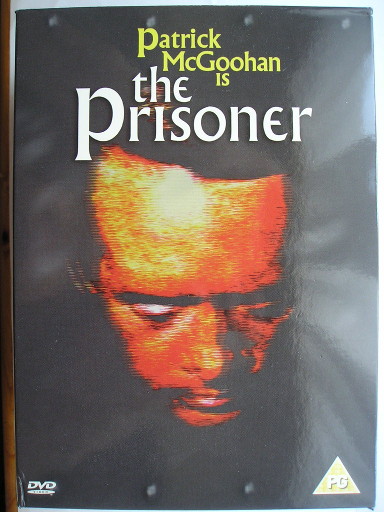
On September 29, 1967, in the UK, the TV show “The Prisoner” made its debut. Some sources report October 1 as its debut date: at that time, an episode of a show could be broadcast on different days in different regions of the nation, and this could be one of those cases.
Starting from 1960, Patrick McGoohan was the protagonist of the “Danger Man” spy show, known as “Secret Agent” in the USA and as “Destination Danger” in other nations. The actor at one point decided to leave the show to create another one, “The Prisoner”, in part a spy show, but also with political connotations and elements that at the time were science fiction.
There are a number of sources that report different and contradictory information about the origins of “The Prisoner” providing various versions of its creation by Patrick McGoohan, the circumstances in which the actor left “Danger Man” and the discussions that led to the production of 17 episodes. Over the course of time, various versions of the possible connections between the two McGoohan shows were also offered, specifically about the fact that the protagonist of “The Prisoner” is John Drake, the protagonist of “Danger Man”.
In the TV show “The Prisoner”, the name of the protagonist is never mentioned, and it’s known only that he’s a secret agent who, at the beginning of the first episode, resigns. Back home, he’s preparing his suitcases when he passes out due to knockout gas. He’s transported to an unknown place called simply “The Village” where people are only identified as numbers. Number 6, as the protagonist is called, is asked for the reasons for his resignation, but he refuses to reveal them, saying that he’s not a number but a free man, a statement that is answered with mocking laughter.
The first episode immediately shows the themes of “The Prisoner”: the Village is an allegory of our society where citizens are apparently free and can even vote for their rulers but are under constant surveillance and if they show dissenting behaviors, they can be subjected to mental control treatments through the use of various drugs and equipment specially created to manipulate people’s thoughts.
The episodes are typically based on the various attempts to manipulate Number 6 to make him reveal the reasons for his resignation. He’s considered an asset of some kind, so the level of violence used on him is limited and is usually based on more subtle manipulations. To direct those attempts, there’s Number 2, the authority who rules the Village, but on whose behalf? When he arrives in the Village, Number 6 asks who’s Number 1, but no answer is given to this question, at least not an explicit one.
Certainly, Number 2 answers to someone, and sometimes he talks on the phone with someone to report and receive instructions. Due to failures in manipulating Number 6, in almost every episode, there’s a new Number 2. In the episode ” Free for All”, even Number 6 becomes Number 2 for a short time after winning the election, which is a total farce in a satire, vitriolic, to say the least, on our society that, on paper, is democratic.
In the episode “Hammer Into Anvil” number 2 is sadistic and when Number 6 finds out that he instigated the suicide of a village woman, he decides to go on the offense and he becomes the manipulator. Episode after episode, the relationships between Number 6 and the assigned Number 2 become more complex, the attempts to get his secrets sneakier until they reach the climax in the two final episodes, “Once Upon A Time” and especially “Fall Out”.
In a show with a style very much of the 1960s, the last episode became surreal with ambiguous metaphors and allegories to a level that confused the audience. The consequence at the time of the broadcast was a wave of protests at such levels that Patrick McGoohan, who was also that episode’s author and director, was forced to hide for some time from the people who demanded explanations.
In 2009, a miniseries in six episodes was broadcast, that is a kind of remake that, however, changed some of the foundations of “The Prisoner”. On the other hand, after updating the 1960s style, the story of a man in a mass surveillance society that’s trying to crush his individuality would have been too similar to our daily life in our society.
“The Prisoner” is a unique and unrepeatable TV show for many reasons. Some of its elements have become iconic, such as the rover and even Portmeirion, the real village where the show was shot, along with its style. In addition to the remake, it had various influences and homages in other shows, and after 50 years, the portrait of the Village society is more topical than ever.


Permalink